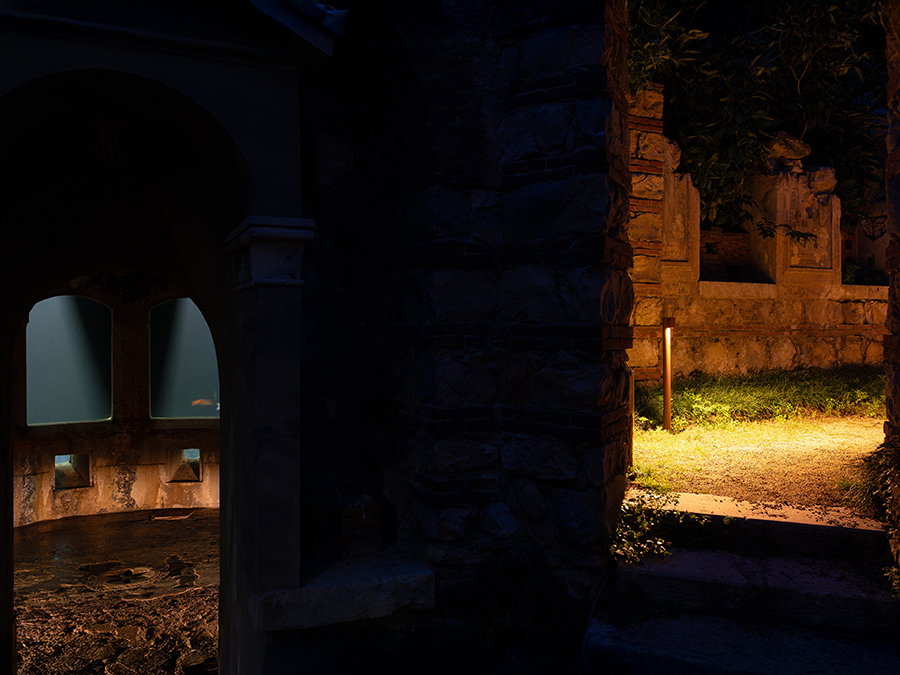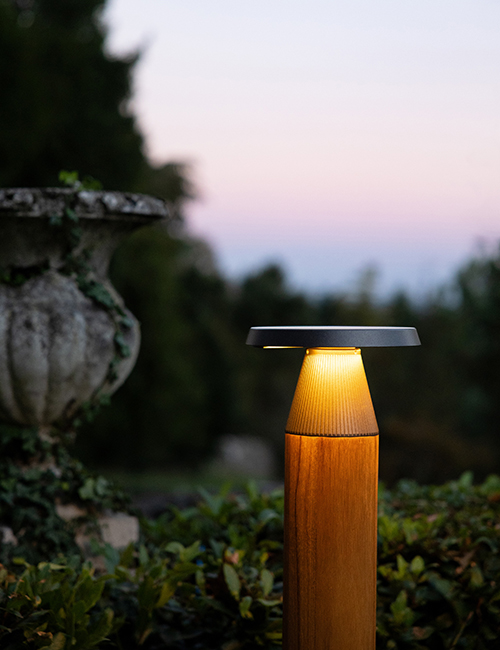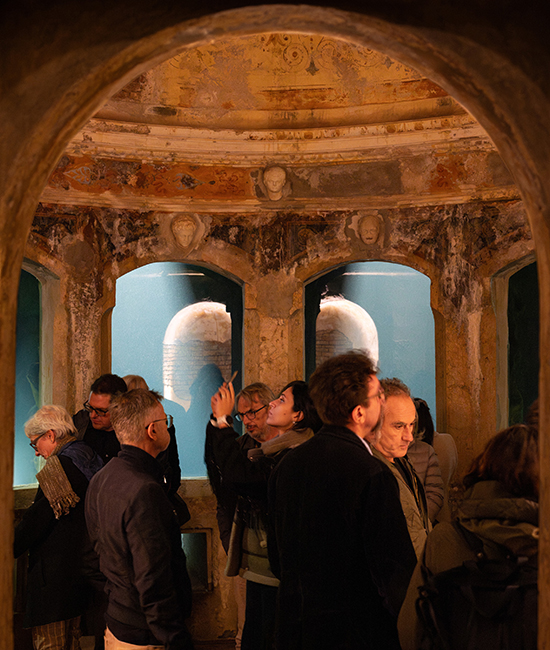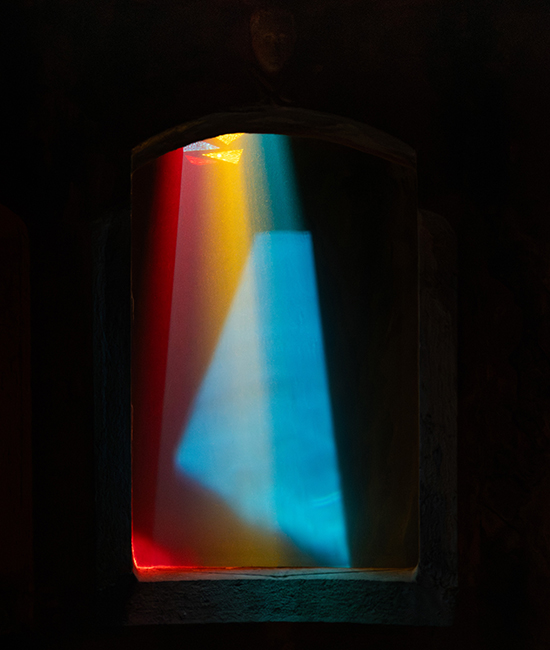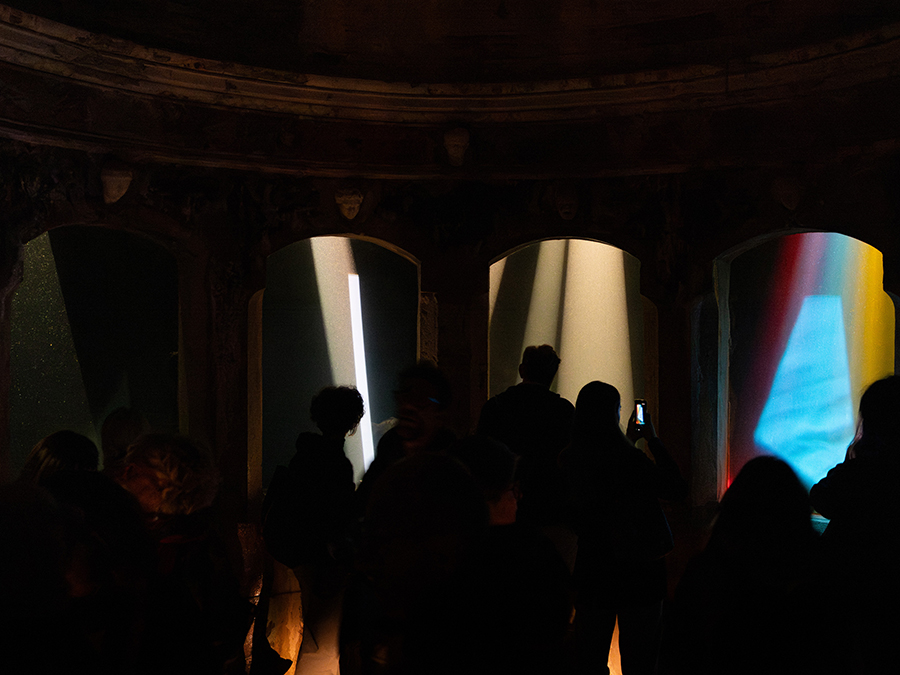A day dedicated to lighting design was organized for AIAPP landscape architects, with a visit to L&L Luce&Light’s headquarters and an immersive workshop at Parco Rossi in Santorso (Vicenza). The event offered an opportunity to explore the dialogue between light and nature and experiment with technical solutions and application scenarios in a setting rich in history and architectural charm.
The morning began with a guided tour of the Luce&Light headquarters, where the participants were introduced to the company’s philosophy, production processes, laboratories and product features. After a training session focused on lighting design for landscape projects, the group went on to the historical park of the Villa Rossi, an emblem of romantic landscaping created between 1865 and 1884 by Alessandro Rossi and architect Antonio Caregaro Negrin. Guided by architect and landscape designer Sophia Los and Renzo Priante, curator of the restoration project, participants explored the history and composition of the park, where nature and architecture coexist in a harmony that is both studied and spontaneous. From the water feature surrounded by Taxodium trees with their aerial roots to the temple and its aquarium, every detail offered cues for reflection on the role of light as a narrative and interpretive tool.

The lighting workshop at the park
The hands-on experience began in the main square in front of the villa, where participants observed the effect of four Ginko projectors with narrow 2° optics and 3000K colour temperature, used to highlight the medallions on the facade that depict themes linked to industry and wellbeing. The projectors’ beams were then directed towards the bell tower of the Sanctuary of Sant’Orso, located behind the villa. This test impressed participants with the optics’ ability to maintain precision and intensity even beyond 200 metres, showcasing their light control in complex, large-scale landscape contexts.
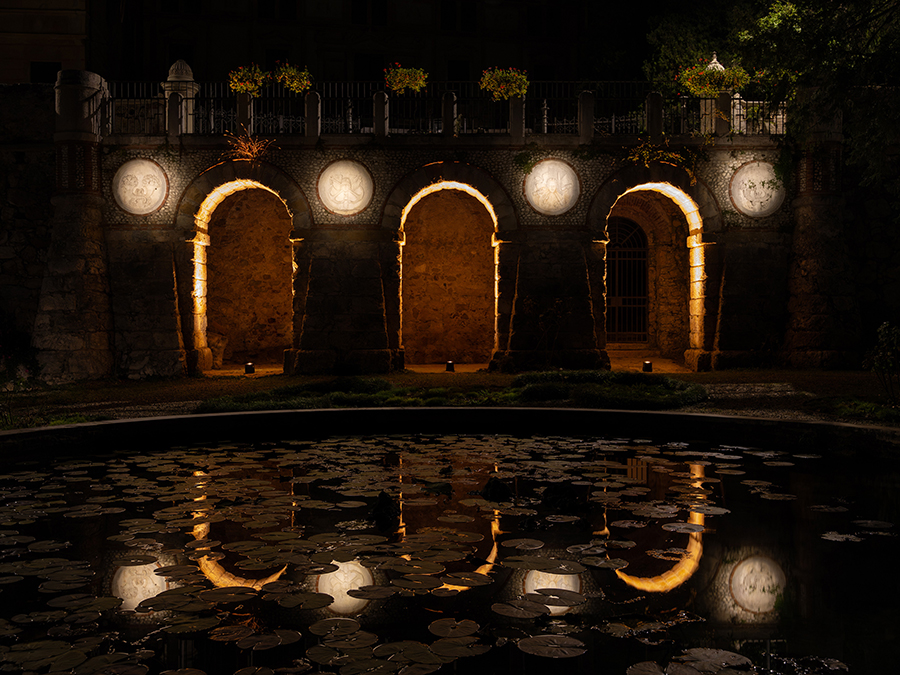
To illuminate the arches below, Quilatero recessed fixtures were placed on the ground. Their combination of 14°×67° elliptical optics (adjustable +20°), warm 2200K light, and glass half serigraphed black produced a controlled lighting effect, illuminating only the arches with no glare or spill, and enhancing depth and definition in the architecture.
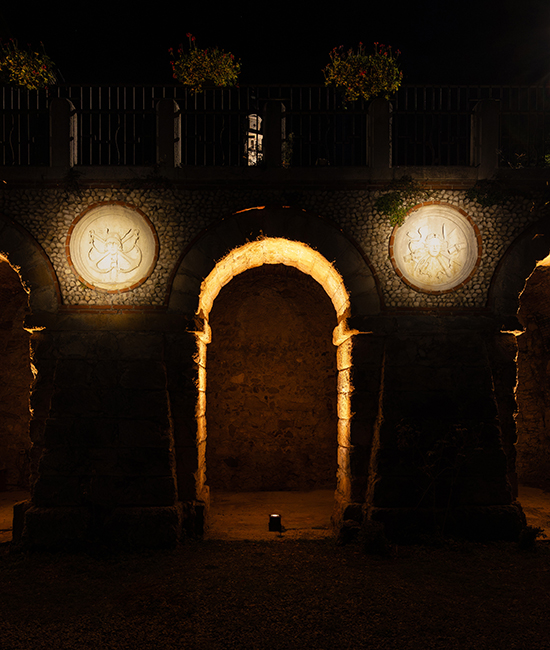
On either side of the square, two Olo bollards with teak wood bodies and 180° semicircular output were used to illuminate the path around the pond while avoiding light spilling onto the surrounding vegetation.

Here, participants also experimented with a variant of the bollard with a two-colour-temperature system, allowing them to test the effect of alternating between a 3000K functional light and a 2200K courtesy light, demonstrating how the mood can be modulated in different moments of use.
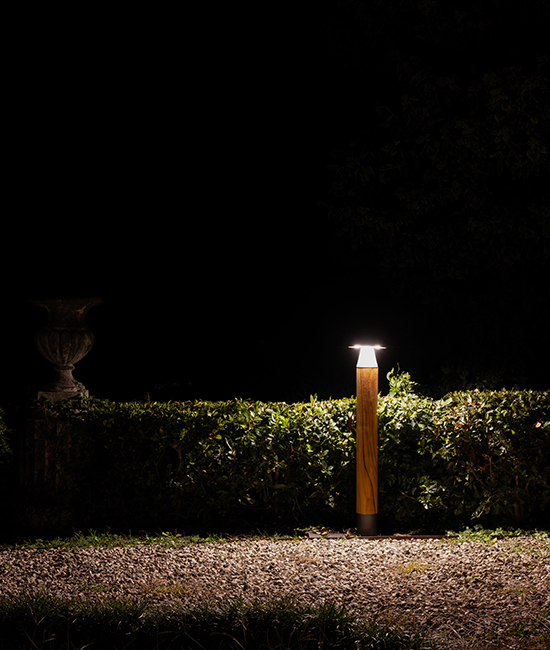

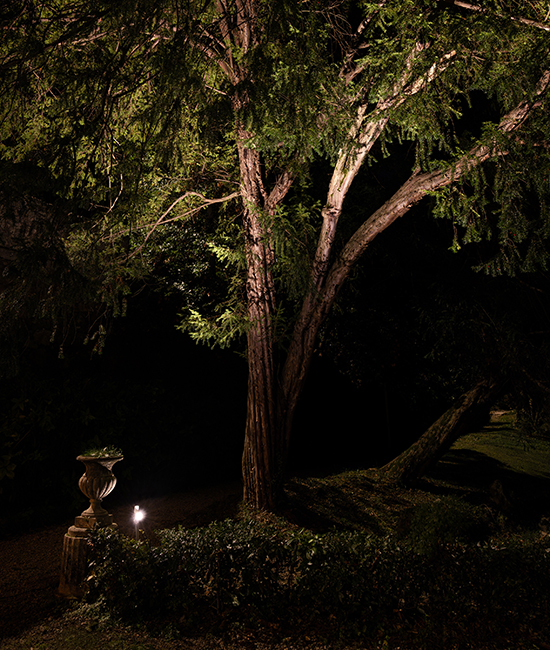
Completing the scene, two Pivot B fixtures, with ground spikes and dual adjustable heads, were positioned to highlight the majestic vegetation – the trunk and crown of the palm and Taxodium tree beside the villa – showing how light can shape the perception of greenery.
Continuing along the path leading to the chapel, the view opened onto a small clearing where Intono B bollards (2200K, corten finish) were positioned to light the way. Their asymmetrical optics gently illuminated the walkway, while their minimalist design and textured finish harmonized with the structure’s geometrics, creating a cohesive visual dialogue.

Inside the 19th-century chapel, two Lyss Mini fixtures in a corten finish with transparent 8°×160° optics had been placed in the side niches to wash the concave surfaces with a warm, grazing light, accentuating their depth and texture.

For the aquarium’s viewing windows, an unconventional use of projectors with beam shapers was tested, with the light directed into the water from the outside. Four Ginko projectors with Light Shaper optics, installed above the aquarium, were used in a unique experiment in luminous storytelling.
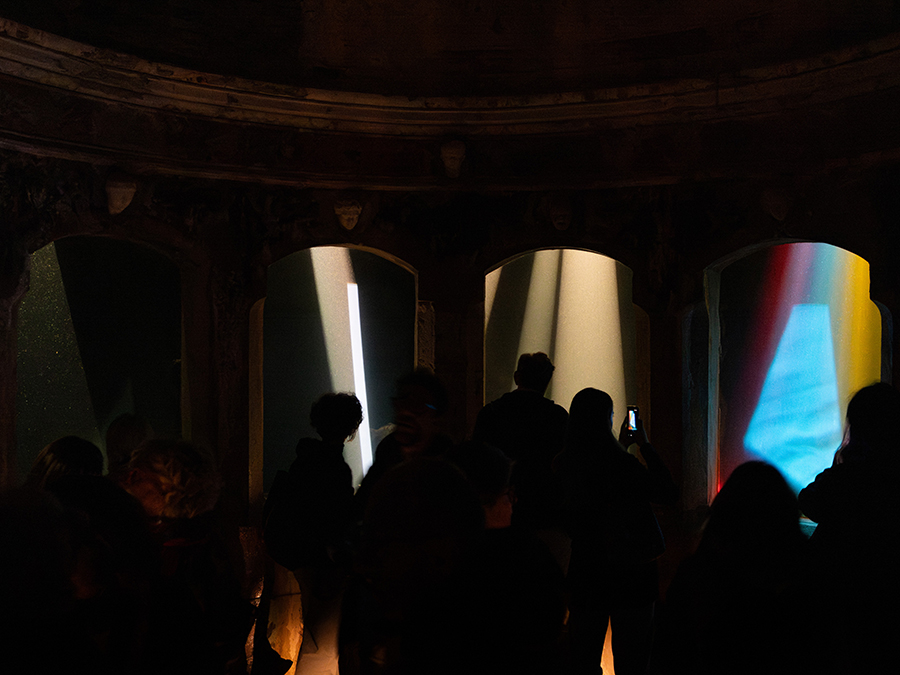
The beam shapers and customized gobos produced sculpted light beams – a blade of light, a quadrilateral, coloured spheres and triangles – that were visible through the windows. The reflections on the water and the movement of the fish added a poetic dimension, transforming the space into an immersive narrative where light guided the gaze and revealed the water’s depth.
This highly original use of light highlighted its expressive potential in enhancing the distinctive character of a place as dusk descends.
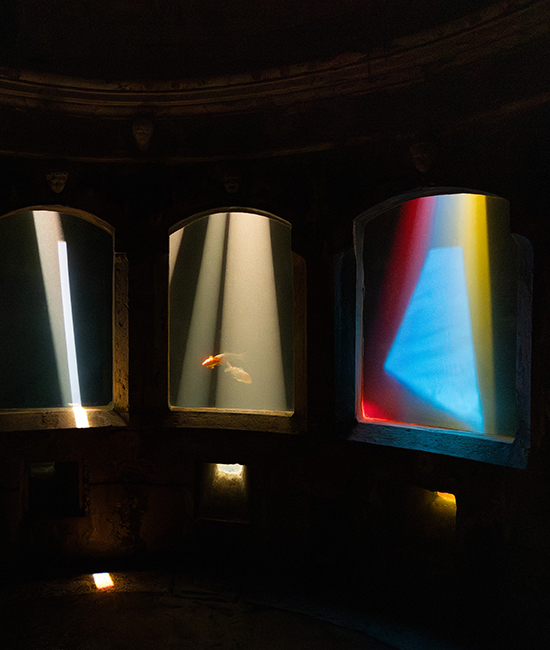
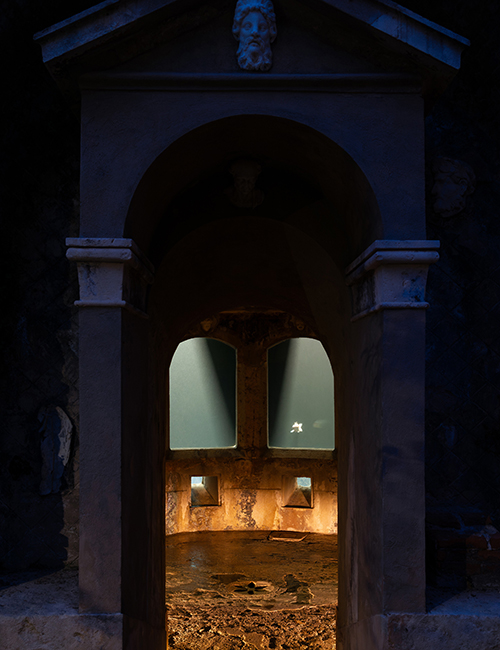
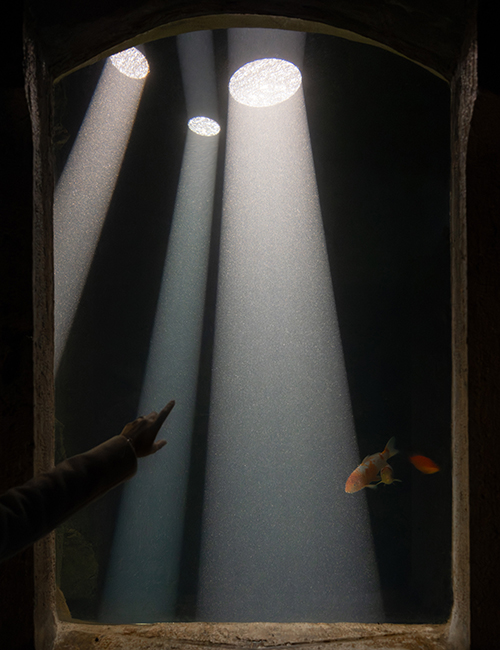
Around the pond, Trevi linear profiles on stakes (2200K, elliptical optics) were arranged to cast a grazing light along the water’s edge, guiding the eye and accentuating the shoreline and its reflections.
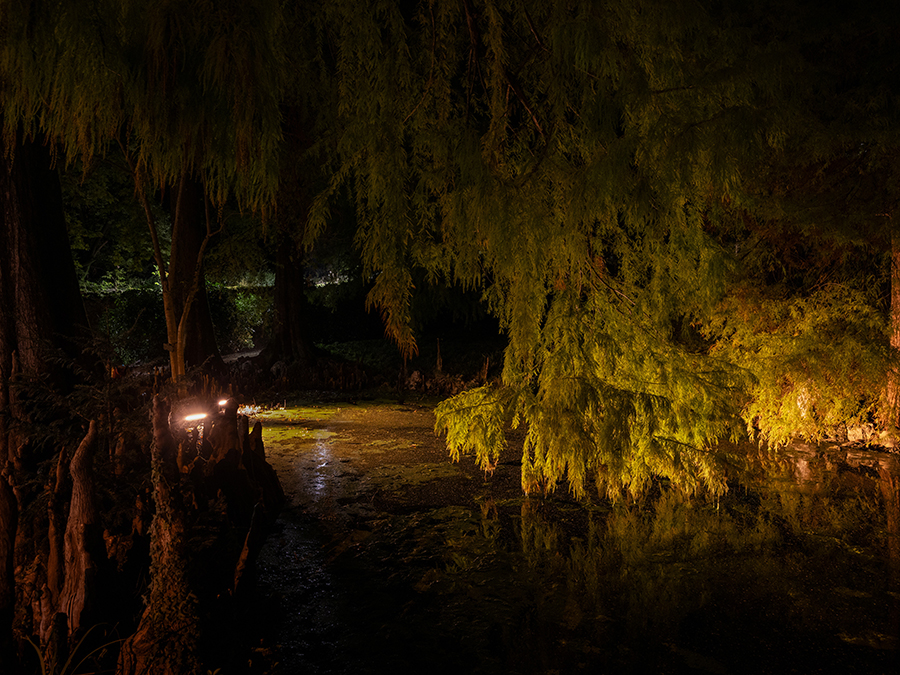
For the Taxodium trees’ aerial roots – the so-called cypress knees, which are among the area’s most evocative elements – discreet, warm lighting was tested using Pivot B projectors (2700K, zoom lens) that blended naturally into the vegetation thanks to their jasper green finish.

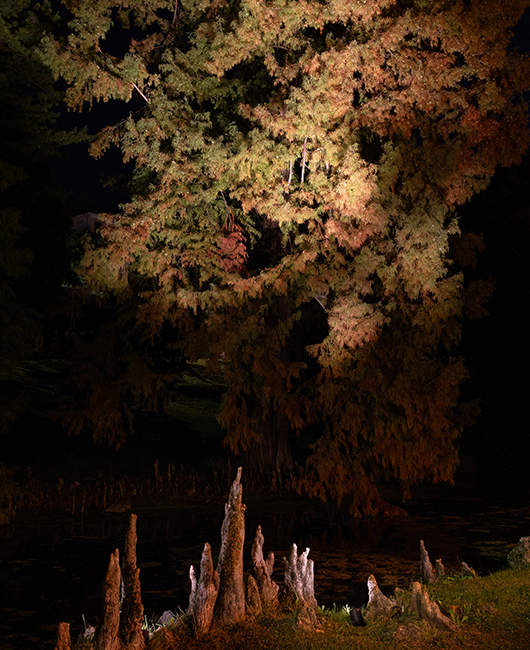
To light the trees’ canopies over the pond, two Ginko 3.0 projectors (3000K) were used. These were able to cast the autumn foliage in a soft, balanced light that enhanced its seasonal tones without making them appear unnatural.
The result was a visually balanced composition linking earth, water and sky, where light became a design and storytelling tool – capable of revealing, as daylight faded, the unique essence of each setting.
Finally, at the entrance, a Ginko projector with a custom gobo depicting a labyrinth was set up, encouraging interaction and inviting visitors on a journey of discovery in which light becomes both a graphic sign and a sensory guide.

Experimenting with light
Luce&Light workshops are created to demonstrate the expressive potential of light in a project, not only as a means of illumination but also as a tool for enhancing volumes, textures and colours, creating atmospheric scenes where aesthetics, functionality and sustainability interact in perfect harmony.
Read about the workshop in the Giardini della Marinaressa (Venice)
